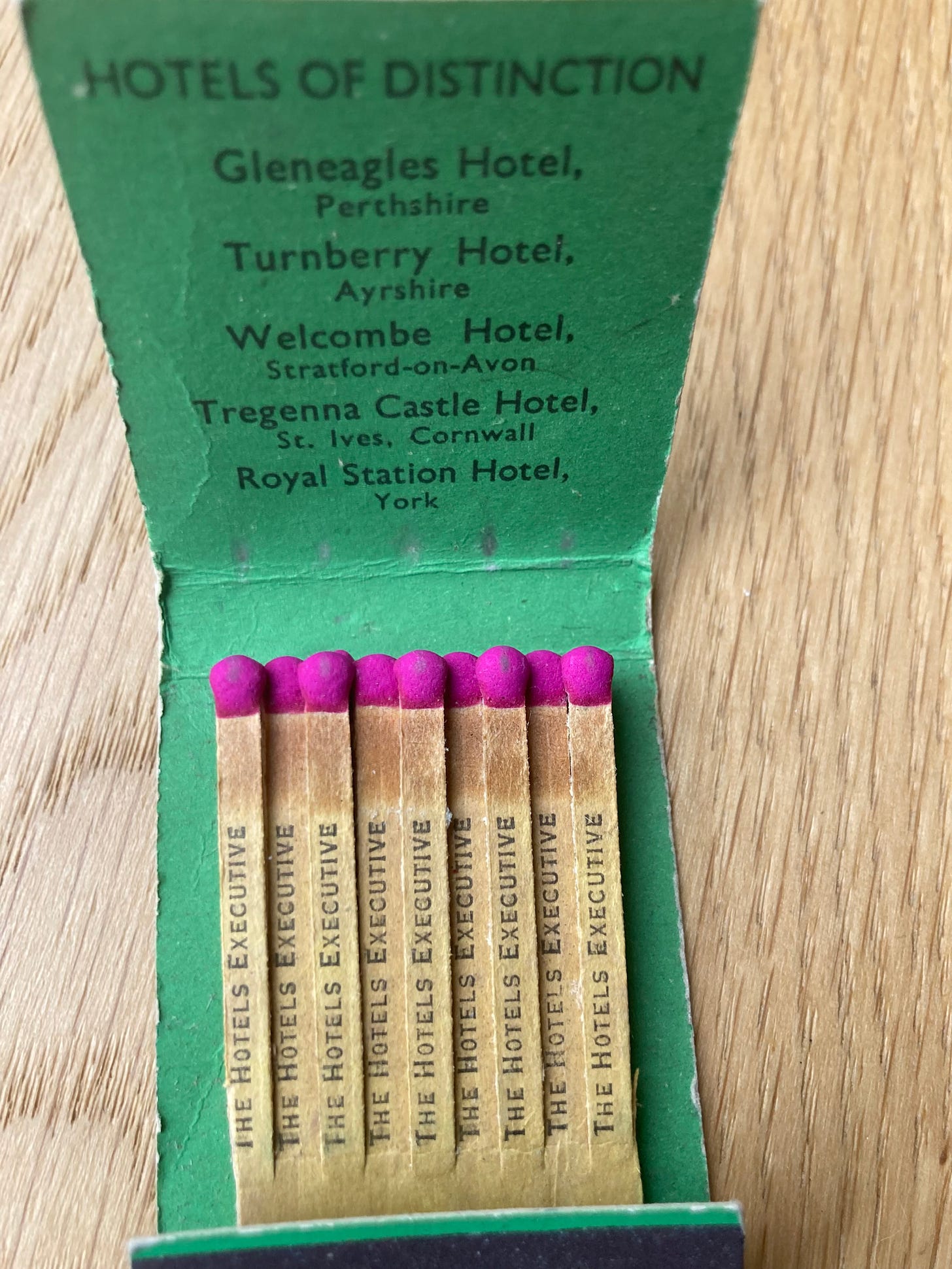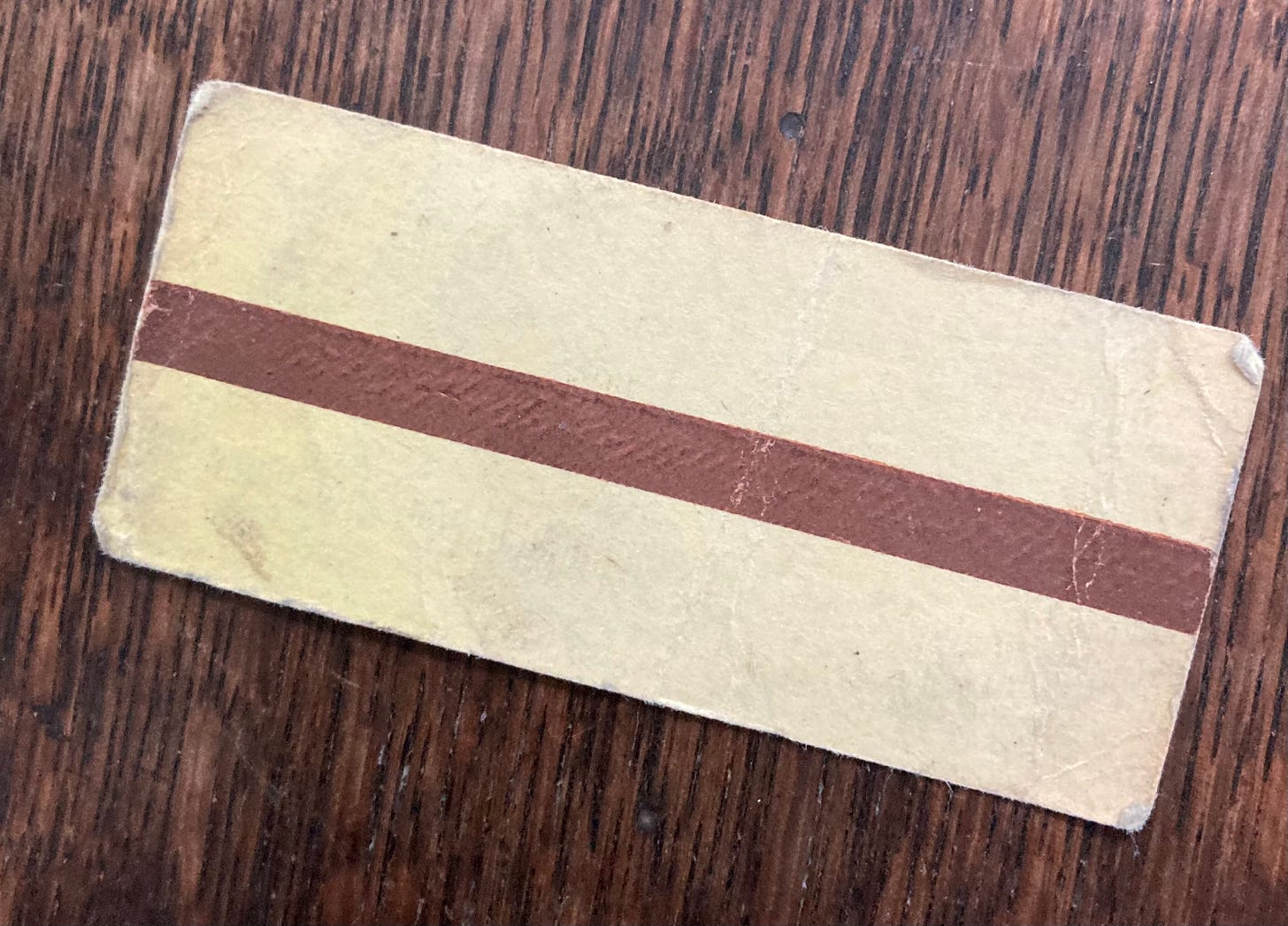I’ve got too much stuff, so I’m having a clear out. Here are some railway artefacts that I don’t think my sons would appreciate inheriting. (But which might, I hasten to add, be interesting to read about.)
What I like about the box lid of this jigsaw, ‘published’ by the Great Western Railway in 1929, is the casualness of ‘About 150 Pieces’, as if even the manufacturer, Chad Valley, couldn’t be bothered to count them. In fact, there are 143 pieces – not a very resonant number, hence the rounding up.
The GWR produced ‘about’ (because two can play at that game) fifty puzzles, far more than any other of the ‘Big Four’ companies, a reflection of the fact that the GWR was the most publicity-minded of the four. This was because people didn’t absolutely have to use their trains to the same extent as those of the other three, the GWR not serving as many great centres of population. It billed itself as a recreational railway (‘the holiday line’) and most of its jigsaws – such as ‘Exeter Cathedral’, ‘Glorious Devon’, ‘Henley Bridge’, ‘Beau Nash’s Bath’ – might as well have been pages from a travelogue.
The jigsaws show that the GWR was not squeamish about aiming its ‘propaganda’ (as it called its publicity) at children. The company also, and again in tandem with Chad Valley, produced a board game, Race to the Ocean Coast. The winner was the first person to surmount obstacles such as ‘communication cord pulled’ or ‘line under reconstruction’ in order to reach Penzance, Birkenhead or Fishguard. (Pre-globalisation, you see.)
I read on a website called GW Railwayana Auctions that the most valuable GWR Jigsaw was not aimed at children but was a reproof or warning to its own parcels-handling staff, to whom it may have been sent free. It depicted, when completed, a scowling boy and a tearful girl who have just unpacked a broken GWR model engine beneath the slogan ‘Lost in Transit! Damaged Through Thoughtlessness’.
An inscription on the box lid read, ‘May you and yours find entertainment at home through solving this Jig-Saw Puzzle. If its message goes home, you will help to solve a big problem facing the Company.’ So here was that very rare thing: an aggressive and intimidating jigsaw. Many were apparently burnt by their recipients in disgust, which is perhaps why GWRailwayana Auctions were recently able to realise a price of £320 for one.
My own jigsaw – which, incidentally, shows Abbotsbury Castle (the engine) hauling the Cornish Rivera Express along the Dawlish Sea Wall – might have fetched thirty quid had the box been in better condition. All the pieces are present, however:
I bought this matchbook at a village fete in Suffolk. I remember thinking I didn’t have a small enough amount of money on me to pay for it – I think it was thirty pence.
The design of the cover looks stylishly abstract: an off-centre black blob in a pleasant shade of green, but if you hold it up to the light, the words ‘The Hotels Executive’ appear on the blob, as they do on the matches. The excitingly named Hotels Executive ran BR’s hotels as a separate organisation from 1948 to 1962, when they reverted to being in-house, under the name British Transport Hotels.
The Hotel Executive’s empire encompassed about forty hotels, not just the five listed on the matchbook, which were perhaps considered the jewels in the crown. But they would have been pretty dowdy in those twilit railway years, when anyone who was anyone drove a car, and so was unlikely to be in a railway hotel. The matchbook belongs - almost literally – to the world of Philip Larkin’s poem, Friday Night at the Royal Station Hotel, a depiction of Hull station hotel, where silence is ‘laid like carpet’ and ‘All the salesmen have gone back to Leeds,/Leaving full ashtrays in the Conference Room.’
The railway hotels were sold off by Mrs Thatcher’s government in 1981, foreshadowing the sell-off of the railways themselves by John Major, who wanted a privatisation of his own, unfortunately for the rest of us. The Oxford Companion to British Railway History speaks of the ‘new and unnecessary names’ bestowed on the privatised hotels, but for Donald Trump, I’m sure, it was absolutely imperative that the Turnberry Hotel become the Trump Turnberry. Another on the matchbook’s list, the Royal Station Hotel, York, has changed its name several times. After being The Principal, York, it’s now The Milner, York, named after William Milner, a York station employee (always described as a ‘foreman’) who died trying to save lives during the air-raid on the station on 29 April 1942. I suppose that if you call your hotel after such a heroic figure, people might be less likely to complain that the mattress is lumpy.
I’ve never stayed overnight at this hotel, but I have occasionally drunk an expensive glass of wine there and (more often) used its palatial Gents, all brass and marble. Some scenes in my novel, Powder Smoke are set in the wood panelled reading room of the hotel as it was in the early 1920s. The main entrance from the station is via swing doors leading into a beautiful octagonal lobby, where one immediately decompresses after the station bustle.
I think I will burn these matches – not in the contemptuous spirit of the above-mentioned jigsaw burners, but to light some cigars.
I have a lot of old railway tickets. My inspiration for holding on to them was a song of 1979 by Tom Verlaine, ‘Souvenir from a Dream’. But that’s not a concept that would cut any ice with the auctioneers of railway memorabilia, especially if the souvenir in question has not been embalmed in protective plastic.
Here is a Paris Metro ticket, the ‘2’ signifying second class because, oddly enough – considering ‘Liberté Egalité, Fraternité’ – a Metro class division persisted until 1991, when it was deemed incompatible with Mitterrand’s socialism. It says ‘Metro Autobus’ because Metro tickets were usable on buses as well from 1968. The ticket has an oxidised strip on the back, to trigger the automatic barriers, technology introduced in 1973.
I think Metro tickets became this bright yellow colour (not so bright in my photo, admittedly) in 1978, having previously been a variety of muddy shades (and often with adverts on the back for quintessentially Parisian things like liquors, women’s blouses, theatres, cat food). The combination of yellow and brown on the back reminded me pleasantly of the banana toffee sweets I ate as a child, and the yellowness was promoted by the Metro as shocking, hence the slogan ‘Ticket Chic – Ticket Choc’, used in conjunction with models wearing sporty 1980s fashions, the ticket poking out of joggers’ headbands, etc.
In 1992, Metro tickets became jade green, and it’s these that I remember as being crumpled and crushed (stubbed out, as it were) in the ashtrays of Parisian cafés and bars. You still see jade green signs in the tabacs where the tickets used to be available. Today, Metro tickets are blandly white and bear the English word ‘ticket’, as though to further banish any mystique. Anyway, they’ll all be gone by the end of the year.
Keep reading with a 7-day free trial
Subscribe to Reading on Trains to keep reading this post and get 7 days of free access to the full post archives.










